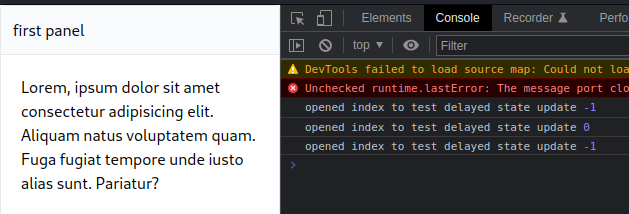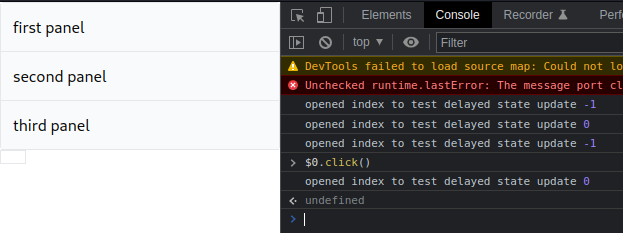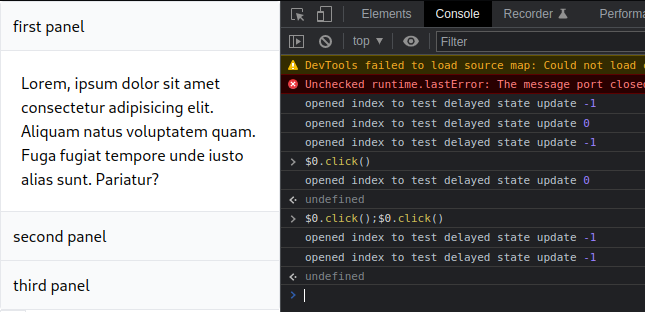I work on React.
TLDR:
But can you trust React to update the state in the same order as setState is called for
Yes.
Yes.
The order of updates is always respected. Whether you see an intermediate state "between" them or not depends on whether you're inside in a batch or not.
In React 17 and earlier, only updates inside React event handlers are batched by default. There is an unstable API to force batching outside of event handlers for rare cases when you need it.
Starting from React 18, React batches all updates by default. Note that React will never batch updates from two different intentional events (like clicks or typing) so, for example, two different button clicks will never get batched. In the rare cases that batching is not desirable, you can use flushSync.
The key to understanding this is that no matter how many setState() calls in how many components you do inside a React event handler, they will produce only a single re-render at the end of the event. This is crucial for good performance in large applications because if Child and Parent each call setState() when handling a click event, you don't want to re-render the Child twice.
In both of your examples, setState() calls happen inside a React event handler. Therefore they are always flushed together at the end of the event (and you don't see the intermediate state).
The updates are always shallowly merged in the order they occur. So if the first update is {a: 10}, the second is {b: 20}, and the third is {a: 30}, the rendered state will be {a: 30, b: 20}. The more recent update to the same state key (e.g. like a in my example) always "wins".
The this.state object is updated when we re-render the UI at the end of the batch. So if you need to update state based on a previous state (such as incrementing a counter), you should use the functional setState(fn) version that gives you the previous state, instead of reading from this.state. If you're curious about the reasoning for this, I explained it in depth in this comment.
In your example, we wouldn't see the "intermediate state" because we are inside a React event handler where batching is enabled (because React "knows" when we're exiting that event).
However, both in React 17 and earlier versions, there was no batching by default outside of React event handlers. So if in your example we had an AJAX response handler instead of handleClick, each setState() would be processed immediately as it happens. In this case, yes, you would see an intermediate state in React 17 and earlier:
promise.then(() => {
// We're not in an event handler, so these are flushed separately.
this.setState({a: true}); // Re-renders with {a: true, b: false }
this.setState({b: true}); // Re-renders with {a: true, b: true }
this.props.setParentState(); // Re-renders the parent
});
We realize it's inconvenient that the behavior is different depending on whether you're in an event handler or not. In React 18, this is no longer necessary, but before that, there was an API you can use to force batching:
promise.then(() => {
// Forces batching
ReactDOM.unstable_batchedUpdates(() => {
this.setState({a: true}); // Doesn't re-render yet
this.setState({b: true}); // Doesn't re-render yet
this.props.setParentState(); // Doesn't re-render yet
});
// When we exit unstable_batchedUpdates, re-renders once
});
Internally React event handlers are all being wrapped in unstable_batchedUpdates which is why they're batched by default. Note that wrapping an update in unstable_batchedUpdates twice has no effect. The updates are flushed when we exit the outermost unstable_batchedUpdates call.
That API is "unstable" in the sense that we will eventually remove it in some major version after 18 (either 19 or further). You safely rely on it until React 18 if you need to force batching in some cases outside of React event handlers. With React 18, you can remove it because it doesn't have any effect anymore.
To sum up, this is a confusing topic because React used to only batch inside event handlers by default. But the solution is not to batch less, it's to batch more by default. That's what we're doing in React 18.




handleClickmethod will be batched so you don't have to be afraid that you will havea=trueandb=false. – Jumpy